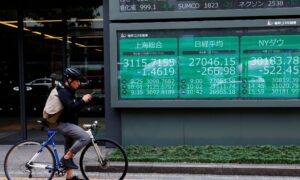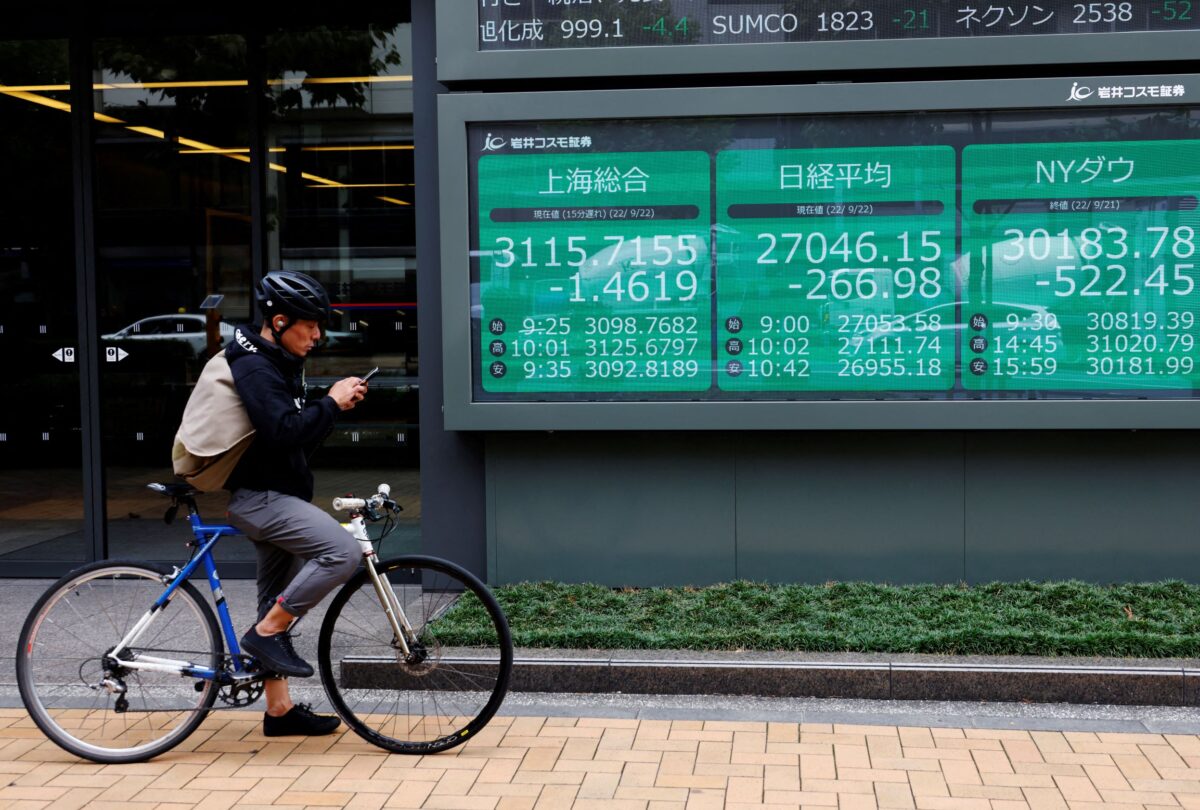
Commentary
At the beginning of the year, many economists had predicted that the COVID “great re-opening” of China would spur domestic spending and the consumer sector.
Following years of periodic lockdowns, the hope is that consumers would roar out of the gates to offset slowdowns in traditional growth areas such as manufacturing and real estate.
But after a brief first quarter of economic growth, the wheels have come off the Chinese economy.
The most recent economic data from May showed that metrics have all deteriorated across the board, from youth unemployment to retail sales, real estate prices, and capital investments, according to official data from the National Bureau of Statistics.
And if the official statistics are so bad, there’s reason to believe that the real economic picture may be even worse.
Weak consumer spending is especially worrisome as the traditional levers to spur growth have all stalled and there are few levers the Chinese Communist Party (CCP) can pull. Retail sales, which ING Bank called “the only functioning engine of Chinese growth,” is floundering.
“And although the year-on-year growth rate of 12.7% looks impressive, this equates to a seasonally adjusted decrease in month-on-month sales and shows that the re-opening momentum is falling,” wrote Robert Carnell, ING’s head of research in Asia-Pacific, in a note to clients.
There are numerous causes of this, including consumer pessimism, unemployment, and an exodus of wealth.
Youth unemployment among the ages of 16-24 is at its highest level on record, sitting above 20 percent as of April 2023. This has caused social stability issues for the Chinese Communist Party (CCP) ruling regime. Older consumers have more cash, but have become more pessimistic about the future of the country and are pulling back their purse strings.
In addition, China is losing a lot of wealth due to migration. Around 13,500 dollar-millionaires are expected to leave China this year, after 10,800 such individuals (and their families) migrated out of China in 2022, according to data from consultant Henley & Partners. Those are the biggest wealth losses among any country in the world.
Top CCP officials have been so concerned about the nation’s economic situation that they are soliciting advice from business leaders on how to boost growth. At least six consultation sessions have been held in recent weeks with business leaders, according to Bloomberg News, citing people familiar with the matter.
Among the topics discussed were how to stimulate the economy, how to boost private sector spending, and how to revitalize the real estate market. And among the suggestions proposed was to introduce more elements of a market-based economy rather than a planned economy—a hallmark of communism.
“Officials acknowledged China’s economy was facing a critical period and displayed an impetus to finding solutions they hadn’t seen before,” according to the Bloomberg report.
While these solution-finding sessions aren’t necessarily foreign to a Western audience, they are uncommon for the CCP and underscore the dire situation facing China’s economy.
The usual economic stimulus measures from CCP’s playbook are all on the table. These include interest-rate reductions, bank reserve requirement cuts, and loosening restrictions on real estate development.
The People’s Bank of China on June 13 lowered the short-term rates (standing lending facility, or SLF) by 10 basis points, or 0.1 percent to spur lending activities. And on June 15, it also cut the one-year medium-term lending facility (MLF) by 10 basis points from 2.75 to 2.65 percent.
But those traditional methods of stimulus have a lesser effect today due to their widespread use over the prevailing two decades.
For example, the CCP has already encouraged bank lending so much that further loosening of regulatory reins would put its banking sector in peril. The property market, which already accounts for over 70 percent of China’s household wealth and 25 percent of its GDP, is already overallocated as a contributor to the economy. Those with the means to buy homes already have multiple homes, most of which are sitting empty. Further stimulus could encourage wild fluctuations in periods of distress and cause undue harm to household wealth and further hamper consumer spending.
After years of encouraging infrastructure spending, local and regional governments are out of cash and already facing defaults. There’s simply very little need for more highways, bridges, and tunnels in a country that has been overbuilding them to spur growth.
All of this makes the CCP’s full-year target of 5 percent GDP growth an impossible goal to meet.
Views expressed in this article are the opinions of the author and do not necessarily reflect the views of The Epoch Times.



















































